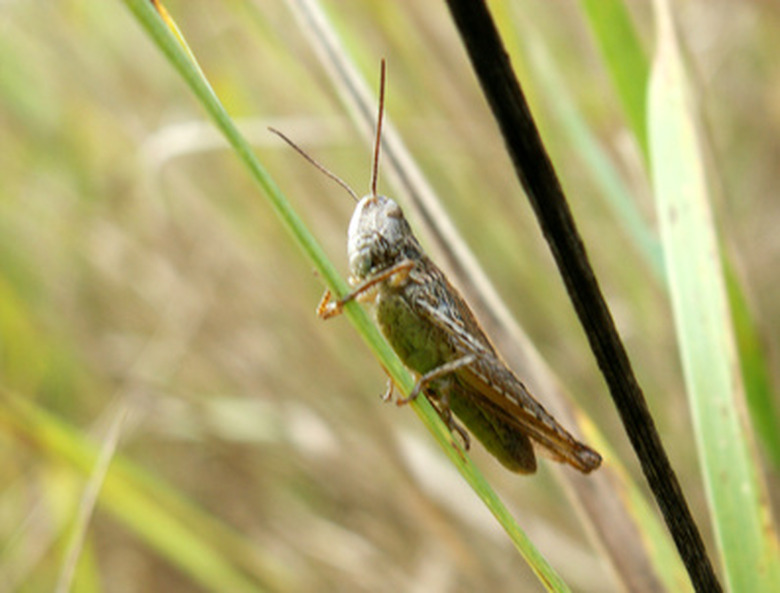Life Cycle Of A Cricket
Crickets belong to the insect superfamily Grylloidea. There are over 2,000 species of crickets living around the globe. The cricket life cycle has three stages: egg, nymph and adult.
Cricket Insect Facts
Cricket Insect Facts
Most crickets are crepuscular or nocturnal, meaning they are most active when the sun is rising, falling or throughout the night. Typically crickets are omnivorous, eating a mixed diet of leaves, fruit, fungi, nectar, seeds, smaller insects and sometimes the corpses of larger animals they find. Crickets usually live amongst plants and leaf litter in or around forest habitats. In many species of crickets, the females are larger than the males.
Cricket Eggs
Cricket Eggs
Female crickets have a tube-like organ on their posterior called an ovipositor. She uses her ovipositor to lay her eggs (which have a diameter of approximately 0.12 inches) 0.4 inches down into the damp substrate. A female cricket can lay up to 2,000 eggs in her lifetime. After she mates, she lays eggs continuously for the rest of her life.
The ideal temperature for cricket development in captivity is between 80 and 90 degrees Fahrenheit. Under the right conditions, the egg will take 14 days to develop. In the wild, eggs slowly develop throughout the winter. After hatching, the cricket larvae, called nymphs, dig their way through the substrate to reach the surface.
Cricket Nymphs
Cricket Nymphs
When nymphs hatch from the egg, they look like a miniature version of an adult cricket without wings or reproductive organs. This developmental style is called incomplete metamorphosis. Alternatively, complete metamorphosis has a fourth life stage that looks different from the adult, like we see in caterpillars and butterflies.
To get bigger, the cricket nymph sheds its hard exoskeleton, or "skin," through a process called molting. During molting, the back of the exoskeleton cracks open and the white cricket emerges soft and vulnerable. Their new exoskeleton then hardens within a few hours around them and they are fully protected once again.
The time between each molt phase is called an instar. Crickets go through around eight to ten molts from hatching to adulthood. Crickets live as nymphs for two to four months.
Cricket Lifespan
Cricket Lifespan
Crickets are said to be adults when they have finished all their molts. Their primary activities are eating and searching for the opposite sex to mate. Male crickets make chirping sounds by rubbing their wings together to attract as many females as they can. After mating, females search for suitable places to lay her eggs. Depending on the environmental conditions, adult crickets live between two and three months.
Eastern Ant Cricket
Eastern Ant Cricket
One of the smallest crickets in the world is the eastern ant cricket (Myrmecophilus pergandei) from North America. A female eastern ant cricket's body measures less than 0.19 inches long, and males are even smaller. These crickets don't just get their name from their tiny size; they have also actually been seen living among ants.
While the ants are not always happy about it, these crickets rub their ant hosts' bodies, presumably to retrieve nutritious oils. The ants and crickets have also been observed transferring food and fluids between each other through a process called trophallaxis.
Giant Wētā
Giant Wētā
The biggest crickets in the world are the giant wētā (Deinacrida spp.) from New Zealand. As adults, their bodies measure up to 3.9 inches long with a leg span of up to 7.9 inches wide. The biggest giant wētā weigh over 1.2 ounces, making them one of the heaviest insects in the world. Giant wētā don't have wings, but they can jump up to ten feet in a single bound.
Their nymph stage with 11 instars lasts between 14 and 24 months. As adults, they live for another six to nine months. While most crickets do not survive cold temperatures, giant wētā have proteins in the hemolymph of their body which enable them to survive freezing several times throughout winter.
References
- Ask a Biologist: Incomplete Metamorphosis Has Three Stages: Egg, Nymph, and Adult
- Cricket Care: Life Cycle
- PMANZ: Black Field Cricket
- Science Learn: Weta
- DOC: Giant Wētā/Wētāpunga
- The Canadian Encylopedia: Cricket (Insect)
- BioOne Complete: A Book Review of The Biology of Wetas, King Crickets and their Allies Edited by L. H. Field
- BioKids: Gryllidae
- Backyard Nature: Exoskeleton
- Mississippi Entomological Museum: The Eastern Ant Cricket, Myrmecophilus Pergandei Bruner (Orthoptera: Myrmecophilidae), Reported From Mississippi, U.S.A
Cite This Article
MLA
Jerrett, Adrianne. "Life Cycle Of A Cricket" sciencing.com, https://www.sciencing.com/life-cycle-of-a-cricket-12334517/. 30 September 2021.
APA
Jerrett, Adrianne. (2021, September 30). Life Cycle Of A Cricket. sciencing.com. Retrieved from https://www.sciencing.com/life-cycle-of-a-cricket-12334517/
Chicago
Jerrett, Adrianne. Life Cycle Of A Cricket last modified March 24, 2022. https://www.sciencing.com/life-cycle-of-a-cricket-12334517/
